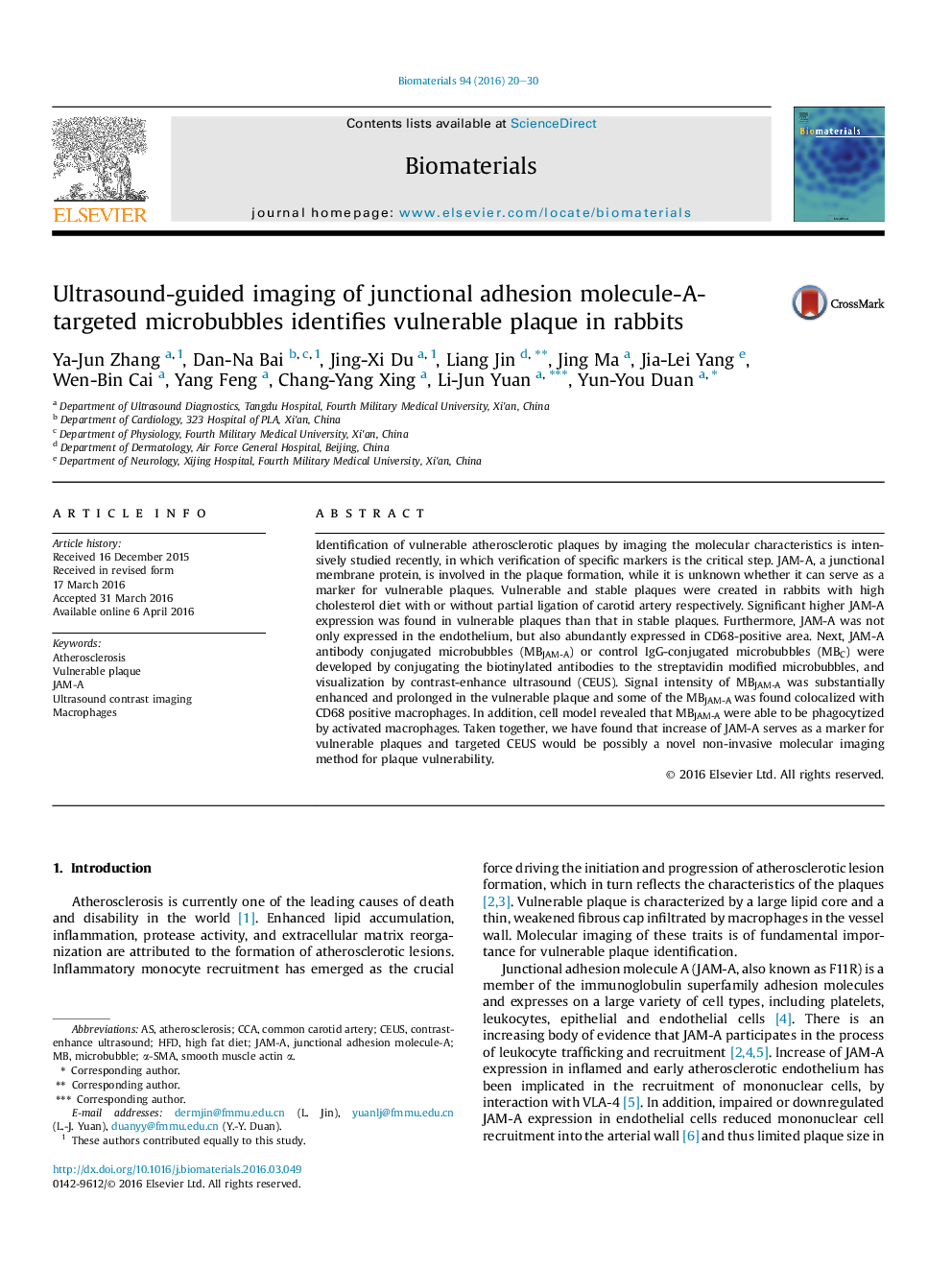| Article ID | Journal | Published Year | Pages | File Type |
|---|---|---|---|---|
| 5380 | Biomaterials | 2016 | 11 Pages |
Identification of vulnerable atherosclerotic plaques by imaging the molecular characteristics is intensively studied recently, in which verification of specific markers is the critical step. JAM-A, a junctional membrane protein, is involved in the plaque formation, while it is unknown whether it can serve as a marker for vulnerable plaques. Vulnerable and stable plaques were created in rabbits with high cholesterol diet with or without partial ligation of carotid artery respectively. Significant higher JAM-A expression was found in vulnerable plaques than that in stable plaques. Furthermore, JAM-A was not only expressed in the endothelium, but also abundantly expressed in CD68-positive area. Next, JAM-A antibody conjugated microbubbles (MBJAM-A) or control IgG-conjugated microbubbles (MBC) were developed by conjugating the biotinylated antibodies to the streptavidin modified microbubbles, and visualization by contrast-enhance ultrasound (CEUS). Signal intensity of MBJAM-A was substantially enhanced and prolonged in the vulnerable plaque and some of the MBJAM-A was found colocalized with CD68 positive macrophages. In addition, cell model revealed that MBJAM-A were able to be phagocytized by activated macrophages. Taken together, we have found that increase of JAM-A serves as a marker for vulnerable plaques and targeted CEUS would be possibly a novel non-invasive molecular imaging method for plaque vulnerability.
